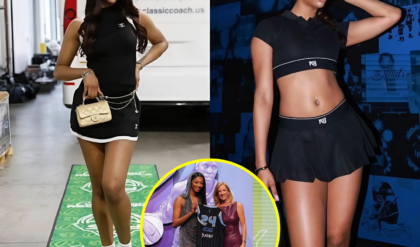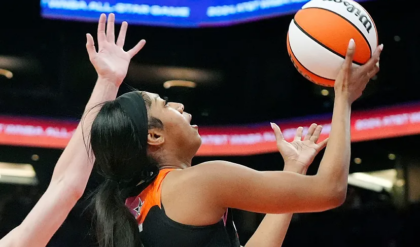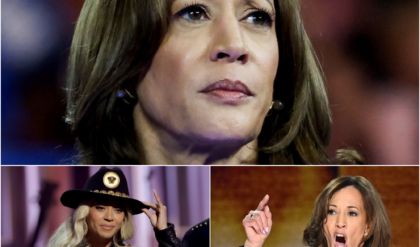Caitlin Clark is rewriting the rules of engagement as one of the brightest talents in women’s sports. Clark’s transition from college sensation to professional powerhouse has been electrifying, but this journey has also come with its share of trials from opponents who have turned the game into a battlefield of intimidation.
In the WNBA, rookies are often tested, but Clark’s challenges have gone beyond the norm. She has faced a wave of aggression from opponents who seem determined to intimidate her, employing direct challenges aimed at derailing her meteoric rise. This is where the story takes a captivating turn. Clark doesn’t shrink back; she shines brighter. Each game against her becomes a showcase of her resilience and ability to rise above the pettiness and hostility aimed at her. Pushed to her limits, she has decided to push back, turning the attempts to suppress her into opportunities to excel. With a mix of finesse and fearless play, she is demonstrating that bullies cannot deter her; they only make her stronger.
To fully understand this story, we need to look at its origins. After being drafted as the number one pick by the Indiana Fever, Caitlin Clark found a home. But as she transitioned from college to the WNBA, the challenges she faced were not just about adapting to the professional game’s higher level of physicality—they were more personal, more targeted. The physical confrontations—being undercut, hacked, and openly taunted—went way beyond what one might expect from standard competitive play.
This treatment led to widespread debate within the basketball community, raising understandable questions about the nature of competition and the fine line between aggressive defense and direct bullying. Fans and commentators have been vocal, with many pointing out that while physical play is part of the game, the type of targeting Clark has faced seems over the line.
This intensified during a game against the Chicago Sky when Kennedy Carter hit Clark hard enough to warrant an upgrade of the foul to a flagrant. Imagine the stakes: if Clark were forced to sit out until the playoffs due to a serious injury from an aggressive play, the ripple effects would be immediate and severe—not just for her team, but for the entire WNBA. Attendance has soared by 40%, and while Angel Reese is a tremendous talent, the skyrocketing interest in the WNBA is not solely her doing.
Despite the aggressive play, Clark’s response on the court was professional. She converted the free throw awarded from the foul and played a crucial role in Indiana Fever’s narrow victory, finishing the game with 11 points, eight rebounds, and six assists. Meanwhile, Carter’s coach minimized the severity of the incident, and Carter herself maintained that her actions were part of competitive sports.
The broader implications of such incidents are significant, especially in the context of the WNBA’s public image and growth. NBA legend Charles Barkley stated, “Y’all should be thinking that girl for getting y’all ass private charters, all the money and visibility she brings to the WNBA. Don’t be petty like dudes. Listen to what she’s accomplished; get her her flowers.”
Clark has faced tough physical challenges on the court before. She was also on the receiving end of a hard screen by Brianna Stewart earlier in the season. Such initiation rites are commonplace in professional sports and are often seen as a way to test the strength of newcomers. Just as the giants of the NBA, like Michael Jordan, Larry Bird, and Magic Johnson, once faced their “welcome to the league” challenges, Clark is navigating her rites of passage in the WNBA.
Part of Clark’s introduction to professional basketball has been marked by a cult-like following and sponsorship deals that are unprecedented in the league’s history. One of her contracts alone with Nike is reported to be worth up to $28 million, nearly double the total annual payroll of the entire WNBA. This stark income gap also puts a glaring target on her back, highlighting the economic inequalities within the sport. However, what Clark has brought to the WNBA and women’s basketball at large can only be described as transformative and empowering.
Despite this, the backlash she faces is baffling and disheartening. It’s not just from current players but from legends like Diana Taurasi and Sue Bird, which adds a layer of disappointment. This criticism often seems less about her play and more about other factors, such as her age and her background. She is a young white woman who’s not just participating; she’s dominating—a narrative that some find unsettling.
For many established stars, the rise of Clark has been challenging to accept. These players, who have been long at the peak of women’s basketball, suddenly find themselves overshadowed by a newcomer. Regardless of her talent, this shift is difficult, creating mixed feelings of being overshadowed and, perhaps for some, a sense of fading relevance in the league they once dominated.
Adding to this tension is the disparity in endorsements. Clark has quickly become the face of lucrative deals, which traditionally might have gone to more established players. There is also a perceived racial double standard that complicates the narrative. Many players, particularly black athletes who have historically led the charge in the WNBA, feel that the media and sponsors favor Clark due to racial biases. They argue that a black player with similar talents and achievements might not receive the same level of praise.
However, Clark is a unique phenomenon in basketball—a once-in-a-generation talent whose pre-professional buzz could only be compared to that of LeBron James. Like LeBron, she’s facing intense scrutiny and pressure early in her career. However, unlike the NBA, which had already been solidified as a premier league by legends like Wilt Chamberlain, Kareem Abdul-Jabbar, and Michael Jordan, the WNBA is still carving out its stature in global sports. Clark’s presence and impact offer the potential to elevate the league’s profile in ways previously unimagined—something everyone will benefit from.
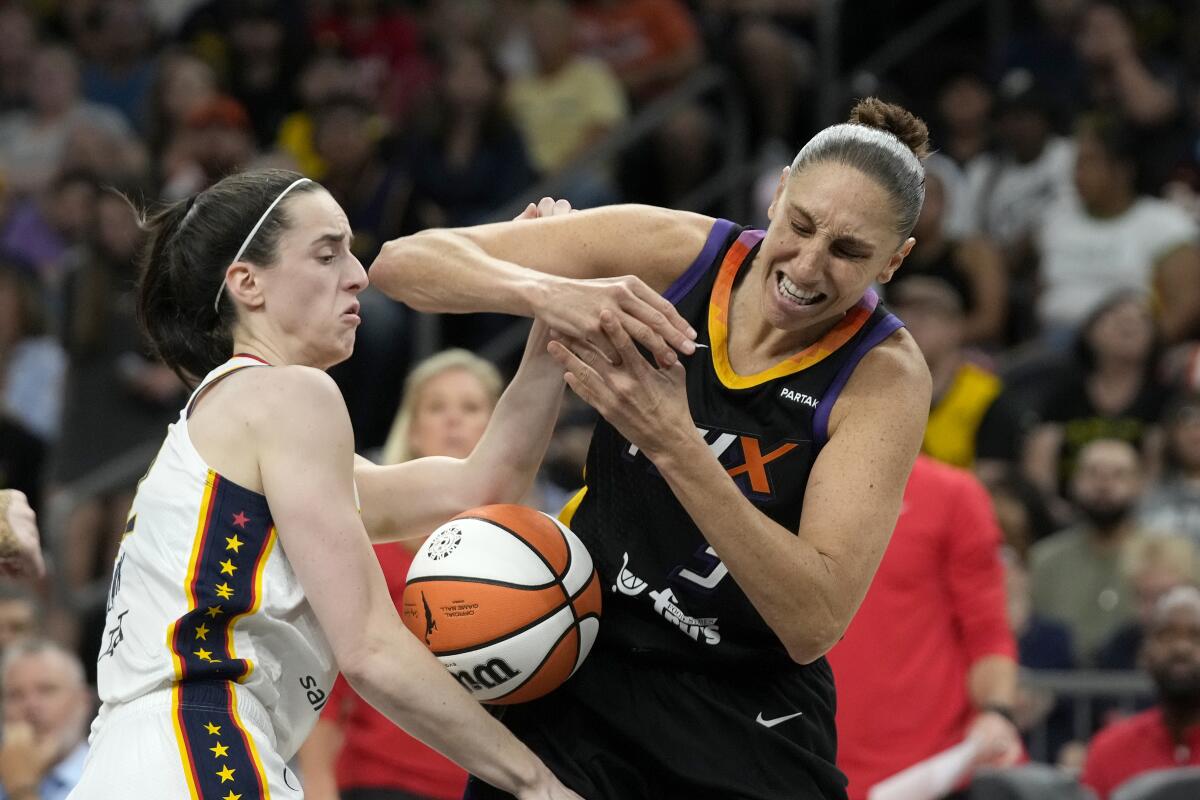
After enduring repeated instances of aggressive play and what some would call bullying, Clark has decided enough is enough. Her response has been to showcase her deep talent and turn adversity into triumph. As the rivalry between the Indiana Fever and the Chicago Sky continues to intensify, Clark once again found herself at the center of a controversial play during a recent matchup. As Clark drove toward the basket for a layup, Angel Reese made a questionable attempt at a block, committing an aggressive foul by striking Clark directly in the head. This move was harshly criticized as being overly aggressive and indicative of jealousy towards Clark’s rising star in the WNBA.
The incident was reviewed by officials, who correctly identified the foul as a flagrant one. True to her character, Clark didn’t let this aggressive play disrupt her focus or determination. She converted the free throws and continued to lead her team with poise and resilience. Following the foul, Clark showcased her growing defensive ability, a skill that has been under scrutiny since her rookie season began. With the game drawing to a close and less than six minutes on the clock, Clark faced off against Chicago’s leading scorer. As she attempted a three-pointer, Clark navigated over the screen and executed a clean block, solidifying her role not just as an offensive threat but also as a competent defender.
Clark’s performance against the Chicago Sky was a demonstration of her resilience. She dropped a game-high 23 points on an efficient 7-for-11 shooting, including three three-pointers. Her nearly triple-double performance, with nine assists, eight rebounds, and two blocked shots, was a clear message to anyone doubting her capability and spirit.
These repeated incidents where Clark has been targeted with rough plays suggest an attempt by opponents to intimidate her, hoping to disrupt her game or make a statement. However, these actions intended to weaken her seem only to strengthen her determination and focus. Clark’s approach to the game emphasizes sportsmanship and professionalism. Despite the aggressive tactics employed against her, she remains a team-centric player. Her ability to rise above provocation and continue to perform at an elite level highlights her mental toughness and competitive spirit. She’s not just a participant in the WNBA; she’s a standout performer who reshapes how the game is played through her skills.
After each game, regardless of the physicality or intensity, Clark makes it a point to acknowledge the effort of her opponents, showcasing her respect for the game and those who play it. This blend of fierce competitiveness, high-level performance, and genuine sportsmanship makes her not just a player to watch but a role model who represents how to face adversity with grace and tenacity. Her ability to shut down bullies and dominate on the court keeps proving that true talent cannot be overshadowed by unsportsmanlike conduct.

Clark’s arrival in the WNBA has not only been a boon for her team, the Indiana Fever, but for the entire league. Her presence has led to a 200% increase in revenue and an 80% hike in ticket prices for Fever games. This kind of transformation is unique in the league’s history. Clark has not only elevated the game’s profile but has also significantly broadened its appeal, drawing in crowds and viewership that the WNBA has long hoped to attract. Now, people who have never before watched a WNBA game are tuning in with enthusiasm. The phenomenon of Caitlin Clark has turned casual observers into devoted fans, expanding the league’s audience dramatically. Last year, the average viewership for games was 462,000; this year, those numbers have soared to 1.32 million. This spike in viewership is directly linked to Clark’s dynamic play and charismatic presence on and off the court.
What she brings to the table goes beyond her statistical contributions. She brings a level of excitement and engagement that has reshaped the entire sport. Her compassion and dedication to the game resonate with fans, making her not just a phenomenal athlete but a powerful ambassador for women’s basketball. As the WNBA continues to grow and evolve with Clark at the forefront, it’s clear that the league is on a trajectory to enjoy sustained success and popularity—all thanks to a rookie who is quickly becoming a legend.
However, despite her monumental success and impact on the
sport, Clark faced a surprising setback: she was not selected for the USA women’s Olympic basketball team, a decision that stirred controversy given her outstanding performances. This omission not only robbed her of the chance to play on one of the world’s biggest stages this summer but also started a broader conversation about her place and recognition in the sport.
Clark is more than just a rookie with a knack for hitting long-range shots. She has become a symbol of excellence and resilience in women’s basketball. Her ability to draw crowds and generate excitement is reminiscent of Olympic legends like Michael Phelps and Usain Bolt, athletes who transcended their sports to become global icons. In this light, Clark’s absence from the Olympic team is not just a loss for her but a missed opportunity for the sporting world to embrace a new heroine.
Away from the Olympics, Clark continues to dazzle on the court. The intensity of the competition has escalated, particularly with Angel Reese, making a thrilling chapter in WNBA history. This rivalry, highlighted in the intense matchups between Clark and Reese, is redefining the WNBA’s landscape. It’s more than just a battle for points or victories. As we watch these young stars carve out their own legacies, one thing is clear: Caitlin Clark is not just playing the game; she’s changing it, challenging her WNBA bullies, and setting a new standard for what it means to be a powerhouse in women’s basketball.
—
If you enjoyed this article, let us know in the comments below, and don’t forget to like, subscribe, and share. Thanks for reading, and we’ll see you in the next one.
